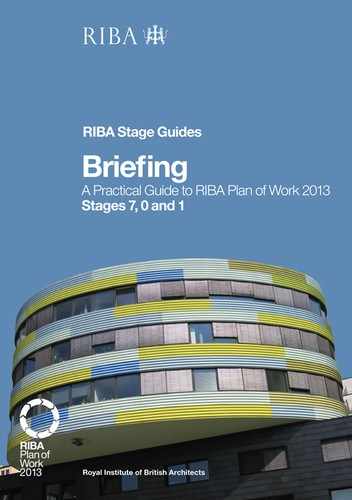Chapter 05
Conclusion
This book is about the stages of the RIBA Plan of Work at the beginning and end of a building project. It starts at Stage 7, when buildings are in use, at the point at which a building is regularly monitored and analysed to ensure that it optimally meets owners’ and users’ needs, or where an existing building or buildings are assessed to inform future building projects and the upcoming Stage 0. It next considers Stage 0, when projects are strategically defined and become identifiable entities with a Business Case. Lastly, it looks at Stage 1, when project briefs are developed and defined and the project team for the rest of the stages are appointed.
The book has set out a number of key principles in relation to these stages:
- When a building or project is in use, a client realises the true value of the building as a measure of the operating costs and its impact on how well it supports their Business Case and intended use. This means that getting the Project Objectives and the brief wrong is an expensive mistake, and confirms that money spent on defining and briefing projects properly is money well spent.
- That evidence and data collected and analysed at Stage 7 are of value for both clients and for wider society, as they help us all to benefit in terms of having better buildings that actually deliver on what they promised and that work for those using them. We should all consider sharing data on our buildings and its systems – and, in turn, benefiting from the experience of others.
- Getting a project right starts from the very early stages, long before any design takes place. Projects need to start with a clear intention and sound Business Case at Stage 0 – and ideally, this should be informed by evidence realised from related or similar Stage 7 experience.
- Good decisions made early on about who the project team will be, and their roles, will have a strong influence on effective delivery. This makes team and contractor procurement very important: something that needs to be carefully ‘designed’ in order to fit with the desired Project Outcomes.
- Stages 7, 0 and 1 are always sequential: you must complete and sign off each of them before progressing to the next. The only exception to this is that Stage 7 In Use should ideally be a programme of continuous improvement for all operational buildings.
- Stage 0 is a new stage in the Plan of Work 2013, but one that reflects considerations and decisions that are already there for clients considering a new project and deciding to take it forward. Stage 0 is a clear process for agreeing both this important starting point and the Strategic Brief.
- By the end of Stage 0, a site should be clearly identified and defined and a Business Case agreed. The client will be in a position to decide to progress with the project, and should understand that this is a substantial milestone.
- There are various types of drawn and written work that take place long before the project-specific design commences in Stage 2. These start with options appraisal at Stage 0, and Feasibility Studies and site-capacity testing at Stage 1. This work is about ensuring that the project moves forward on an informed basis in the knowledge of what is deliverable.
- A project brief is a ‘live’ document that should be confirmed and reviewed at key stages, starting with the Strategic Brief at Stage 0, the Initial Project Brief at Stage 1 and as a Final Brief at Stage 2. Clients always benefit from a well-considered and informed briefing process.
The pressures on projects have changed over many years, through technical considerations and project complexity being significantly increased. Clients remain concerned about delivery and programme, the cost of the project and the quality and value of what is being delivered. The approach set out in this book encourages clients to consider these issues holistically, and to think about the capital costs of briefing, designing and building in the context of why they actually need the project, its purpose and how much it can benefit them over time.
What Happens Next?: Stage 2 Concept Design
The next stage in the Plan of Work is the first design stage of a project, at which point the brief progresses into specific ideas and concepts and the project team is firmly established. For this team to work well, and for the work that they produce to be effective, it needs to be based on the strong foundations of a good brief informed by a Business Case, evidence about what works and a sound understanding of the purpose of the project. All of this will result from the correct application of stages 7, 0 and 1.
Stage 2 is the first stage at which the architectural concept for a project will become apparent, and is one that most design and project teams are used to – and that many expect to be the ‘beginning’ of the project for them. Following on from this book, the next in the series sets out how best they can use the information that is available to them, how to work together as a team, and the important considerations and decisions that need to be made during this early design stage.
The key learning to take from all of the books in this series is how one stage influences another, and how important it is to see the Plan of Work as a whole and as part of a continuous circle of improvement whereby we learn, as an industry, from what has worked – and consequently deliver effective, sustainable and durable buildings. As this series demonstrates, this applies to projects of all sizes and complexity using all types of information and technology, and across all building types.
